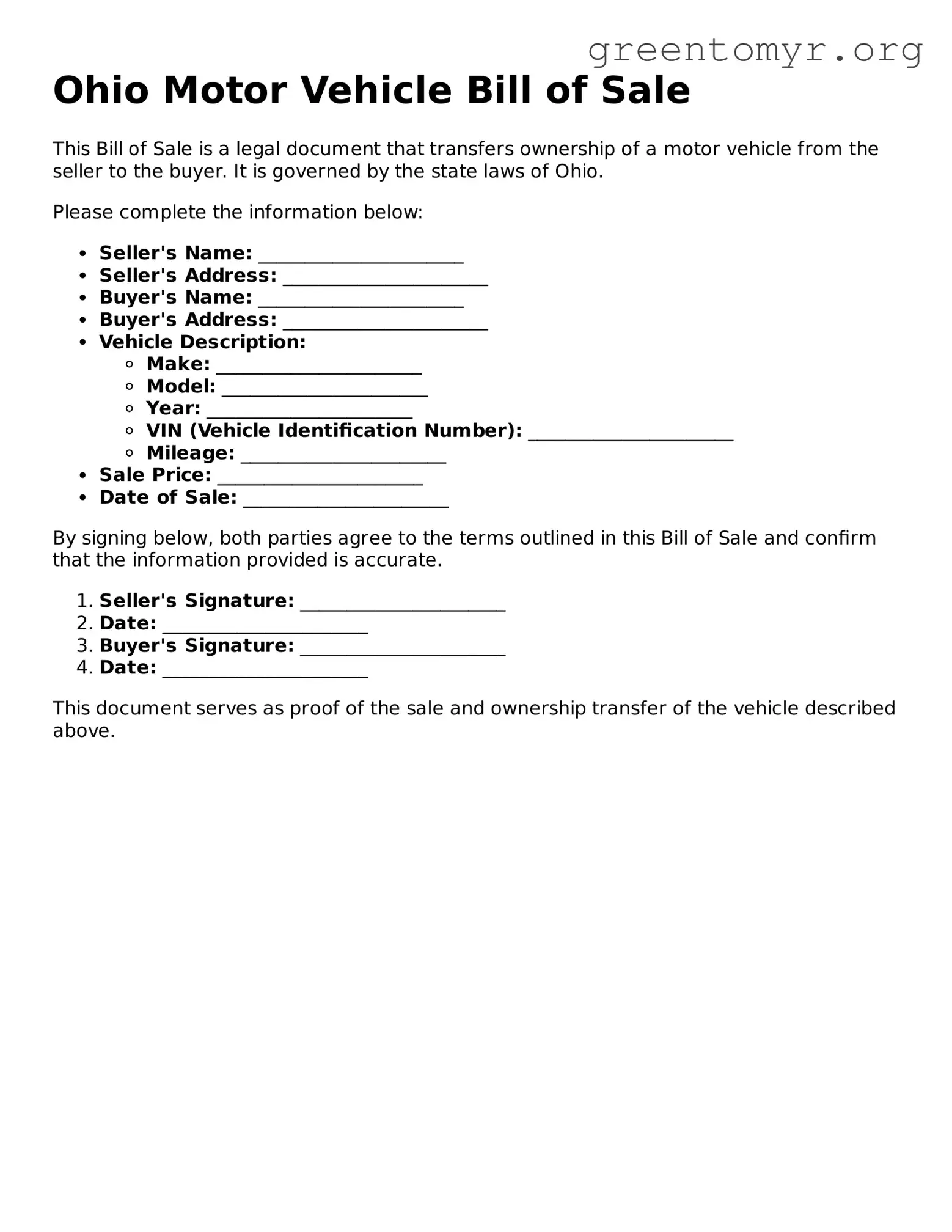Filling out the Ohio Motor Vehicle Bill of Sale form can feel straightforward, but many people make common mistakes that can complicate the process later. Understanding these pitfalls can help ensure a smooth transaction.
One frequent mistake is forgetting to include the full names and addresses of both the buyer and the seller. This information is crucial for identification purposes. Incomplete details can lead to confusion or disputes down the line.
Many individuals also fail to accurately record the Vehicle Identification Number (VIN). This number is unique to each vehicle and serves as its fingerprint. Omitting or miswriting the VIN can prevent the transfer of ownership, resulting in potential legal issues.
Another common error is neglecting to indicate whether the sale includes any financing or trade-ins. If the vehicle is being sold as part of a trade, or if there are outstanding loans against it, this must be documented clearly on the form.
Some people overlook the importance of the date of sale. The date provides a clear timeline for when the ownership changes hands. Forgetting this detail can lead to complications, especially concerning taxes and registration.
Payment details can also trip up many sellers. Failing to specify the method of payment can cause misunderstandings. It's essential to note if cash, check, or another form was used to finalize the sale.
Another mistake often made is not including the odometer reading at the time of sale. This information is important for both buyers and sellers. It helps establish the vehicle's condition and value, and it's required for accurate record-keeping.
Lastly, some individuals do not consider getting the form witnessed or notarized. While not strictly required in Ohio, having a witness can provide extra protection and assurance for both parties involved. It adds an additional layer of legitimacy to the transaction.
Avoiding these common errors can help ensure a hassle-free experience when completing the Ohio Motor Vehicle Bill of Sale form. Taking the time to double-check each section will save time and trouble in the future.
